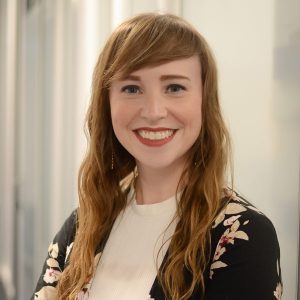By Liz Corney
Content Marketing Manager at iWave.
What is a Donor Advised Fund?
Donor advised funds are now the fastest-growing philanthropic vehicle. Although they’ve been around since the 1930s, they have been growing in popularity since the 1990s. In 2018 they accounted for more than 3% of all charitable giving in the United States.
A donor advised fund (DAF) is a separately identified fund or account that is maintained and operated by a section 501(c)(3) organization, called the sponsoring organization. Essentially, it is a hands-on way to give to a charity and have a say in where the funds are going. Some donors may choose this option because they don’t want to be recognized publicly, or because they aren’t interested in (or are tired of) being asked to donate by other charities.
Each DAF account is made up of contributions made by individual donors. Once the donor makes the contribution, the sponsoring organization has legal control over the funds. However, the donor or an advisor retains advisory privileges with assets in the account. At any time after the donation is made, the donor and their advisor can recommend grants from the account to qualified charities.
An Investment Account with a Philanthropic Twist
A DAF is kind of like a 401(k) or any other normal investment account. With the help of an advisor, the investor contributes money to an account based on their financial goals and risk profile. Over time, that investment grows and returns dividends to the investor (and fees to the investment company and advisor). In the case of a 401(k), the investor may qualify for a tax deduction. Similarly, with a donor advised fund, a donor is able to invest money and is immediately eligible for a tax deduction. The DAF then becomes the owner of the funds and collects management fees. The donor, the advisor, and the fund manager work together to prioritize philanthropic goals and identify potential grants to various nonprofits the donor may care about.
Are DAFs Good For Nonprofits? The Pros and Cons
There are a few things with DAFs that you’ll want to consider for both the donor and the nonprofit organization receiving the donation.
Donors:
Pro: If you only donate to a DAF, you’ll have one tax record to keep track of. Simple.
Pro: You get to decide how your donation is used either by specifying your funds to a grant or a special project.
Con: There are fees associated with DAFs – these usually include management fees.
Con: DAFs are not required to give away their funds at any time. So, money that you’ve given may not see any immediate impact for a charity unless you’ve taken the time to designate those funds.
Nonprofit organizations:
Pro: Being the recipient of a DAF often doesn’t require a lot of maintenance or administrative work.
Pro: DAFs are becoming more and more popular, so it may be a trend we see increasing over the next few years.
Con: A DAF is another entity between the donor and your organization, which may make it difficult for you to steward those donors.
Con: Since DAFs aren’t required to give their money right away, this could mean a lag in a donation to your organization.
Is Investing in a DAF Easier Than Setting up a Foundation? Why wouldn’t a donor just set up a foundation?
In many ways, yes. It is simpler. Administering a private foundation takes time and energy and isn’t something that appeals to all philanthropists. Many do! But for some philanthropists, administering a private foundation simply isn’t an appealing use of time and energy (not to mention money tied up by operating costs). So, choosing to invest in a donor advised fund is a great strategy to avoid administrative red tape while making impactful charitable donations.
Types of Donor Advised Funds
There are four different types of donor advised funds:
- Commercial Funds
Example: Fidelity Charitable, Schwab Charitable, Vanguard Charitable - Community Foundations
Example: Silicon Valley Community Foundation, Community Foundation for the Capital Region - Institutional DAFs
Example: Higher education, The Nature Conservancy - Boutique/Hybrid
Example: Single-family office or investment-management firm
Finding Donors with DAFs
If you’re thinking, “this is great, but where do I start?”, don’t fret just yet. We’ll take you through a few steps to help. Before soliciting a donor with a donor advised fund, you need to identify donors who have these investments.
Here are a few ways to do this:
Start with your own donor information. Search for gift records in your CRM that include “advised” or “fund.”
Jump into iWave! We have the most comprehensive and most up-to-date charitable donations database, called VeriGift, not to mention an extensive public and private foundations database. Try searching terms like “advised” and “fund” in the search bar. For added verification, you can also download the .pdf source material (ex: Form 990 or annual report) to verify the DAF and the gift amount.
Ask your gift officers for help. They can establish or may already have working relationships with financial advisors and can inquire about DAF opportunities with current donors and prospects.
Google it. Due to their rise in popularity (and the vast information found on the internet) It’s surprisingly easy to find many DAFs and details about their giving profiles online.
After you’ve identified noteworthy DAFs and the donors who invest in them, treat the rest like any other prospect you would reach out to. And remember, make sure you are connecting with your prospect at their level. For tips on making connections, check out our blog post here.
DAFs often have different and sometimes exclusive areas of focus. Based on a DAF’s giving profile, you can understand if they are a cause-based fund or a regional-based non-exclusive fund which are a little more open-ended. Once you’ve made that determination, you can decide whether the donor is the influencer (cause-based) or if the advisor should be your main point of contact and connection.
What about Canada?
Great news Canadians, iWave’s charitable and foundations data includes donor advised funds from Canada, the United States, and International sources. To learn more about DAFs from a Canadian perspective, read this article by Wealth Professional Canada.
Get Started
Log in to iWave to start researching donor advised funds, or book a demo to see how iWave can help you attract your next major gift donor.
About the Author: Liz Corney is iWave’s Content Marketing Manager. She has a degree in Journalism, is a fiercely positive team-player and a creative self-starter. She has experience working in software technology, video/mobile games, learning & development, social & traditional media, and communications. Liz is also the co-founder of a local nonprofit organization working to better the lives of homeless women in her community.



